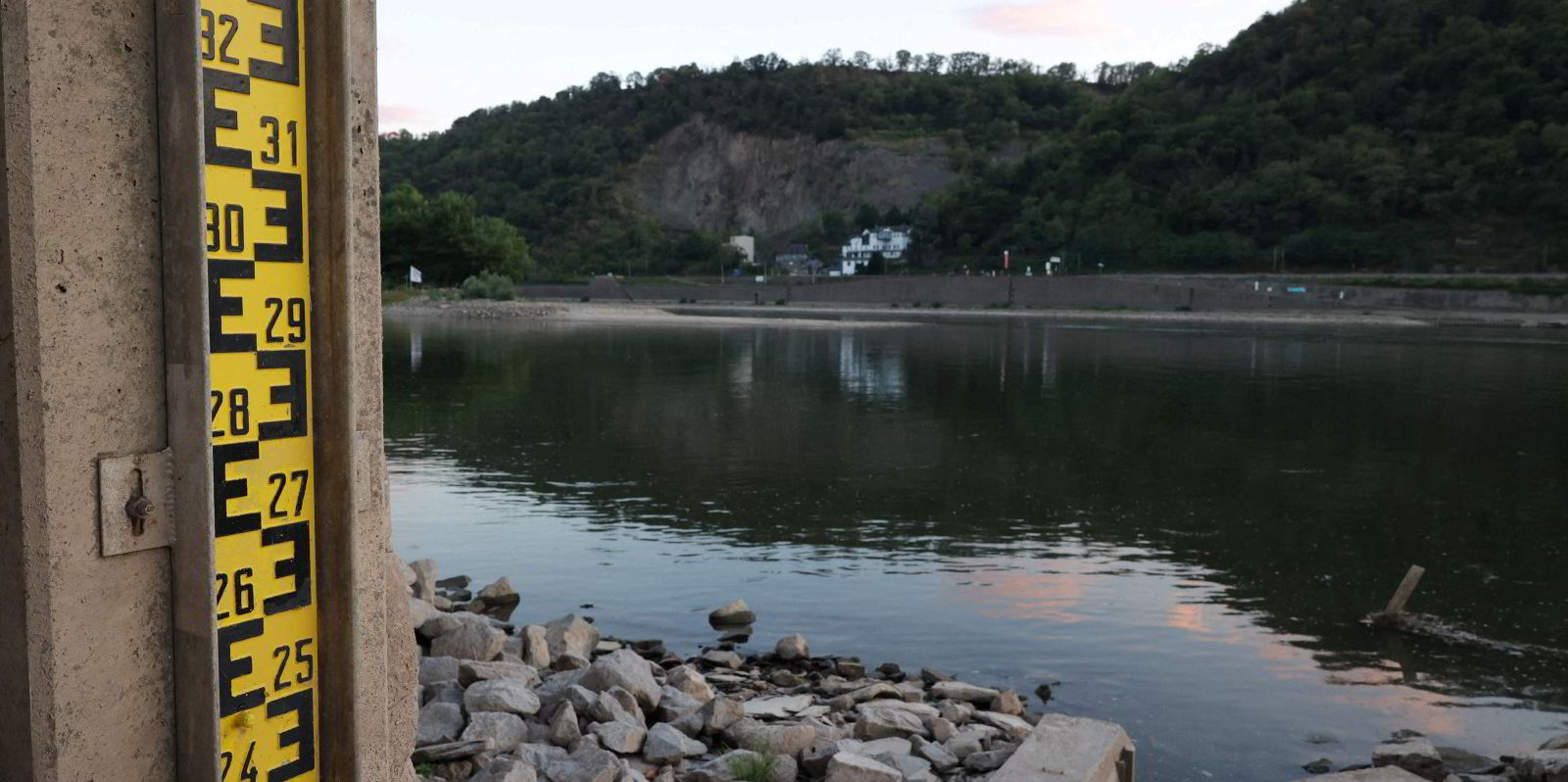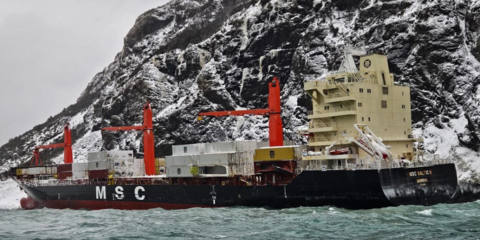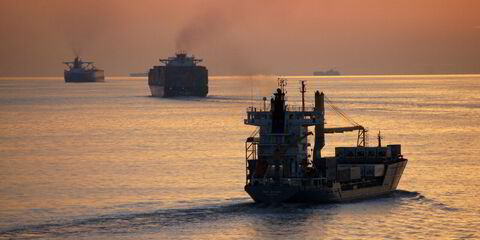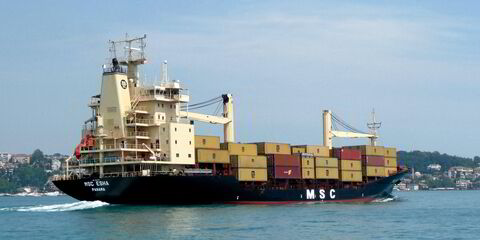Barges have halted operations on parts of the Rhine, the most important inland waterway in Europe, due to record high summer temperatures and low water levels. Rain in the coming days might get this vital natural piece of transport infrastructure back to a semblance of working order.
But with the planet rapidly heating, the near closure of the Rhine this summer is an important symbol of the way the weather is changing fast — and how unprepared we are for systemic change.
The Rhine flows from Switzerland through Germany and the Netherlands and into the North Sea.
It connects Basel, Strasbourg, Cologne, Rotterdam and dozens of other cities through a variety of other waterways.
The rule of thumb is that waterborne transport on the Rhine needs an absolute minimum of 40 cm (about 16 inches) of water measured on the “Kaub Gauge” in western Germany. By last weekend, the measurement had reached 32 cm.
On 16 August, one of the biggest barge operators, Contargo of Duisburg in Germany, said it was going to halt operations on the river: “Since no significant rainfall is expected in the coming days, we expect the Kaub Gauge level to fall below 40 cm from this coming weekend. Then our barges will not be able to sail without danger, and for reasons of safety we shall have to largely discontinue our navigation on the Upper and Middle Rhine.”
The company said it could no longer meet its schedules under its contractual obligations, which make clear it can guarantee shipments only when the Kaub level is above 81 cm.
Barges have been continuing to ply the Rhine until now but have been carrying up to 80% less cargo to keep a safe draught and prevent the vessels running aground.
There is already huge congestion at the ports of Antwerp in Belgium and Rotterdam in the Netherlands, for a variety of reasons, with barge discharge wait times of 40 and 60 hours respectively.
Vital artery
Vessel operators are also charging customers surcharges due to the soaring cost of bunker fuel, adding to the problems of shippers.
The Rhine closed in 2018 because of low water levels. Global warming means this is going to become more common, leading analysts at Deutsche Bank to conclude that “waterways could become an Achilles heel” for Europe.
Waterways could become an Achilles heel for Europe
Levels are also very low at waterways in France that have traditionally played important cargo-carrying roles.
Yet these links had been tipped for a bigger future: policymakers want to use vessels more to reach net-zero carbon goals because they are less carbon-intensive than road vehicles.
Voies Navigable de France, which is responsible for managing most of the country’s inland waterways, said canals such as the Vosges had been closed and vessels have been forced to carry only one-third of their capacity across the entire national system.
In the meantime, Germany is losing a vital artery for transporting coal, at a time when the government was planning to use coal-fired power stations to reduce dependence on Russian gas.
The river cruise industry has already been forced to alter schedules, with operators saying they are prepared to transfer passengers onto smaller vessels if necessary.
There was talk after the 2018 low water (which was estimated to have knocked 0.2% off Germany’s GDP) that work would be undertaken to deepen the Rhine, but those ideas got lost amid Covid and the Ukraine war.
The Russian invasion also added to a shortage of barges in Germany, as some are reported to have been moved over to grain shipments in Ukraine.
Droughts have been declared all over Europe, including areas in the north of the continent. Analysts are beginning to wake up to the importance of this part of nature for so long taken for granted by shipping and the rest of us.
As far back as 2009, Ismail Serageldin, vice president of the World Bank, said a mixture of climate change and growing populations meant wars for oil or land might be replaced: “The wars of the 21st centuries will be about water, unless we change the way we manage water.”(Copyright)



